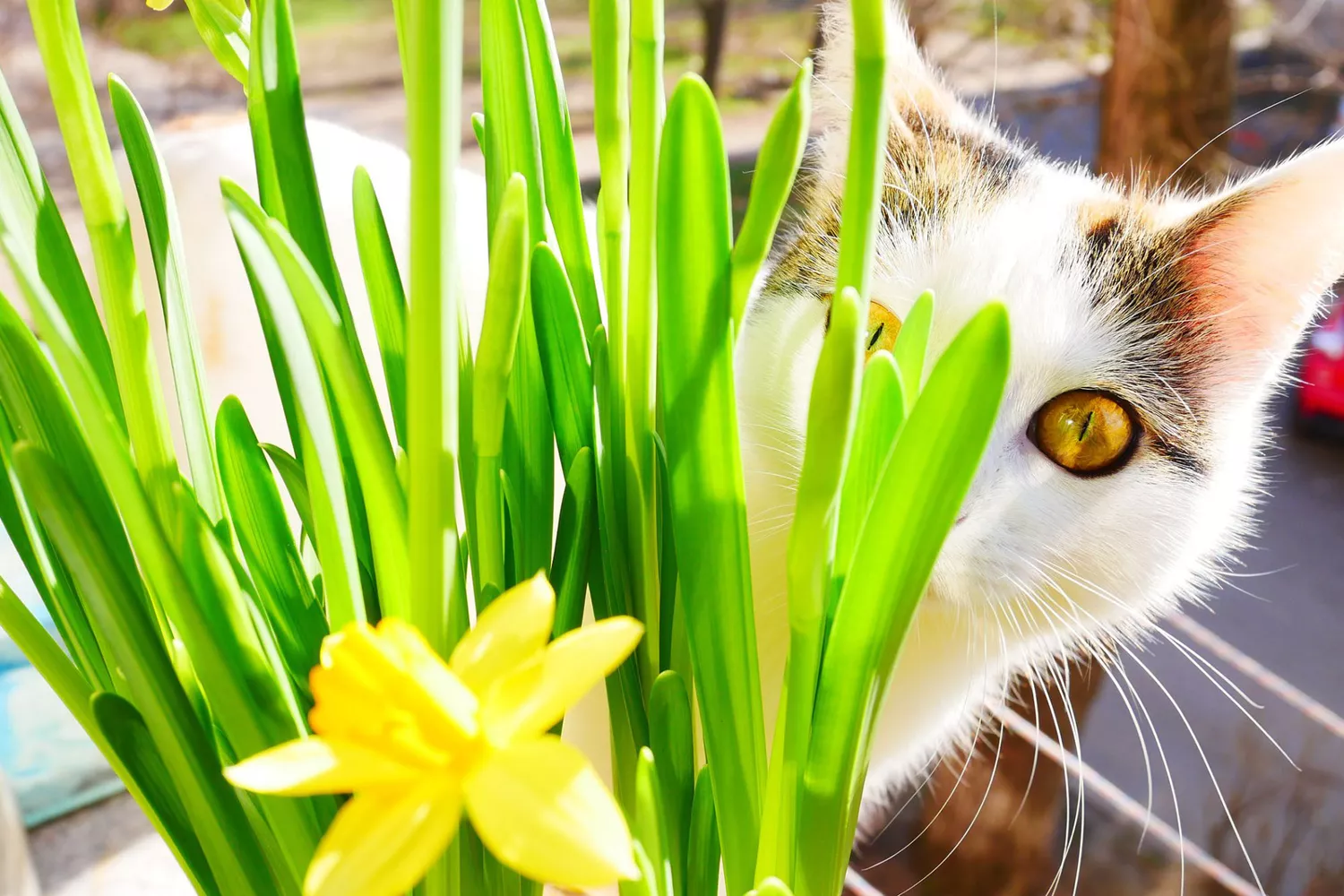
It’s official: spring has sprung! As we welcome the sunlight and odor of fresh blooms with our friends fur-ever, it is essential to understand which they can sniff and romp in securely, particularly when it comes to daffodils– the popular flowers representative of the season.
Are daffodils poisonous to felines? Or are these stunning spring blooms safe to keep around our feline good friends?
Daffodils and our feline friends are not an excellent combination, as these intense flowers are toxic to cats and can cause some major damage if consumed.
Why Are Daffodils Poisonous To Cats?
The daffodil, known by its taxonomic name Narcissus, is a popular spring bulb typically seen in cheery colors such as yellow and white. While a beautiful flower, the daffodil is not safe to keep around cats– or any family pets for that matter.
” If a cat were to consume a couple of bites of the leaves, stems, or petals, indigestion might be seen. Ingesting leaves, stems, and bulbs can result in low high blood pressure, heart rhythm problems, respiratory anxiety and problem breathing, and neurologic abnormalities including ataxia, tremors, and seizures,” says Renee Schmid, DVM, DABVT, DABT, and Senior Veterinarian Toxicologist at the Pet Poison Helpline.
She continues, “These indications are normally seen when the bulbs are ingested, as the toxic elements are more focused in the bulb. Also, a foreign body blockage is possible if large pieces of the bulb are consumed.” Yikes!
So, what is it exactly that makes daffodils a recipe for disaster?
Schmid states daffodils are poisonous to felines (and pets and horses!) due to “calcium oxalate crystals that cause oral and GI (intestinal) pain/irritation” in addition to “phenanthridine alkaloids that remain in the leaves, stem, and bulbs that trigger severe GI distress, hypotension, and breathing effects.”
With that being stated, it’s definitely best to avoid keeping daffodils inside and eliminating them from your backyard to make sure your cat doesn’t engage with them.
Signs and Symptoms of Daffodil Poisoning in Cats
Not exactly sure what indications to look for? We’ve got you covered.
Typical signs of daffodil poisoning in cats include:
Stomach upset
Vomiting
Inappetence
Diarrhea
Increased heart rate
Drooling
Schmid explains that the more daffodil is consumed, the higher the risk for the more major adverse effects such as low blood pressure, heart rhythm irregularities, respiratory depression, seizures, and others.
What To Do If Your Cat Eats A Daffodil
Did you find your cat consuming daffodils in the yard and aren’t sure what to do next?
If it’s just a few nibbles, Schmid recommends monitoring at home for signs of intestinal stress like diarrhea, vomiting, or anorexia. However, if you’re not sure of the amount or find it was a lot, you’ll require to look for instant help from an expert to treat your cat.
” If bulbs or a bigger quantity of the stem and leaves were ingested, your pet ought to be required to a DVM for decontamination and tracking,” Schmid says.
You can call the Pet Poison Helpline at (855) 764-7661 or the ASPCA Animal Poison Control Center at (888) 426-4435 to request for guidance. (An assessment charge might use.).
Other Flowers and Plants To Keep Away From Your Cat.
With numerous types of flowers and plants in existence, it can be challenging to know which are OK to keep in your home and lawn, and which plants are hazardous to cats. Here are a few of the big ones:.
A couple of other flowers and plants to steer clear of, according to Schmid, include:.
Japanese yew.
Azaleas.
Rhododendrons.
Lily of the valley.
Oleander.
Lilies in the Lilium and Hemerocallis sp. families are particularly unsafe, as Schmid cautions consumption of any part of these plants can cause intense kidney failure in felines.
If you’re a passionate family pet moms and dad and plant moms and dad, find out more about pet-friendly plants that are safe for felines or check out the Pet Poison Helpline’s typical poison list to check to see if you have any possible toxins in your home or yard.










